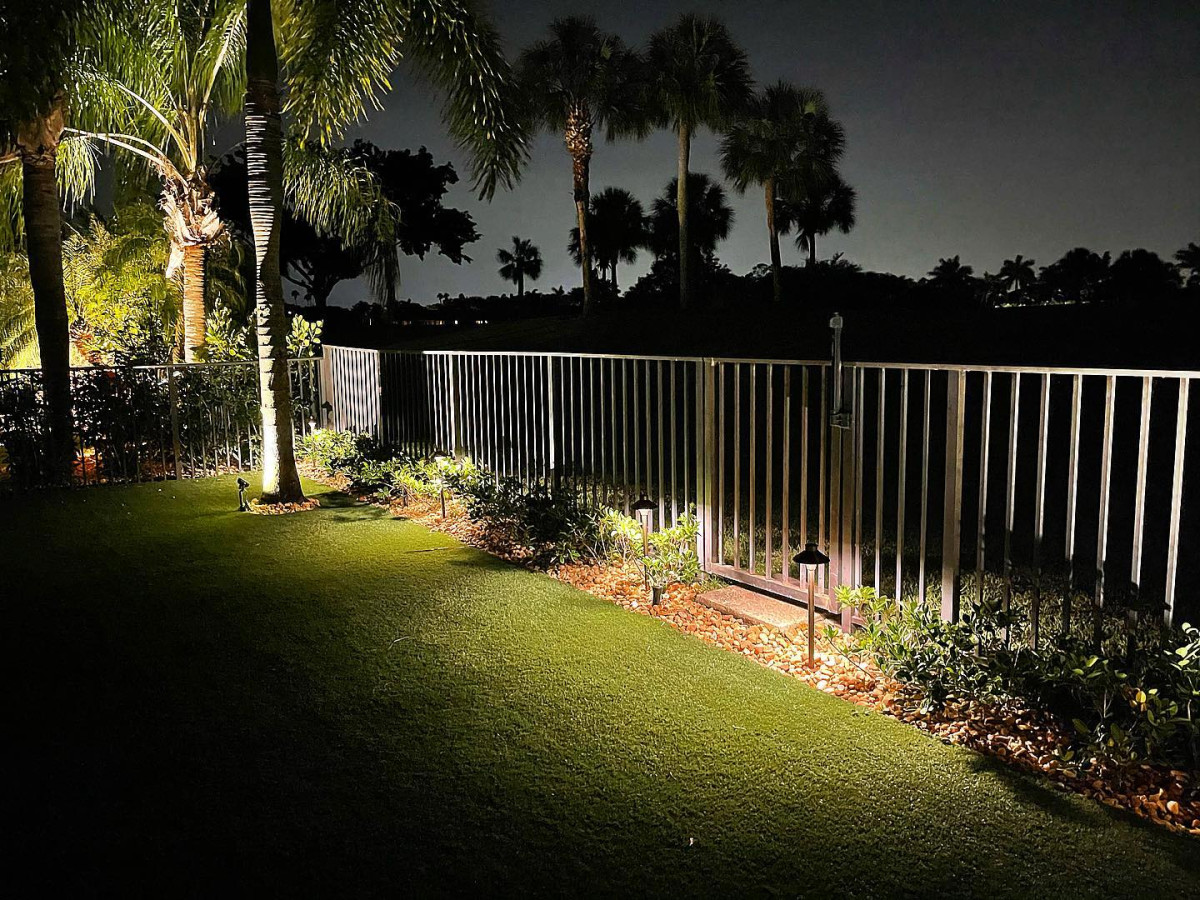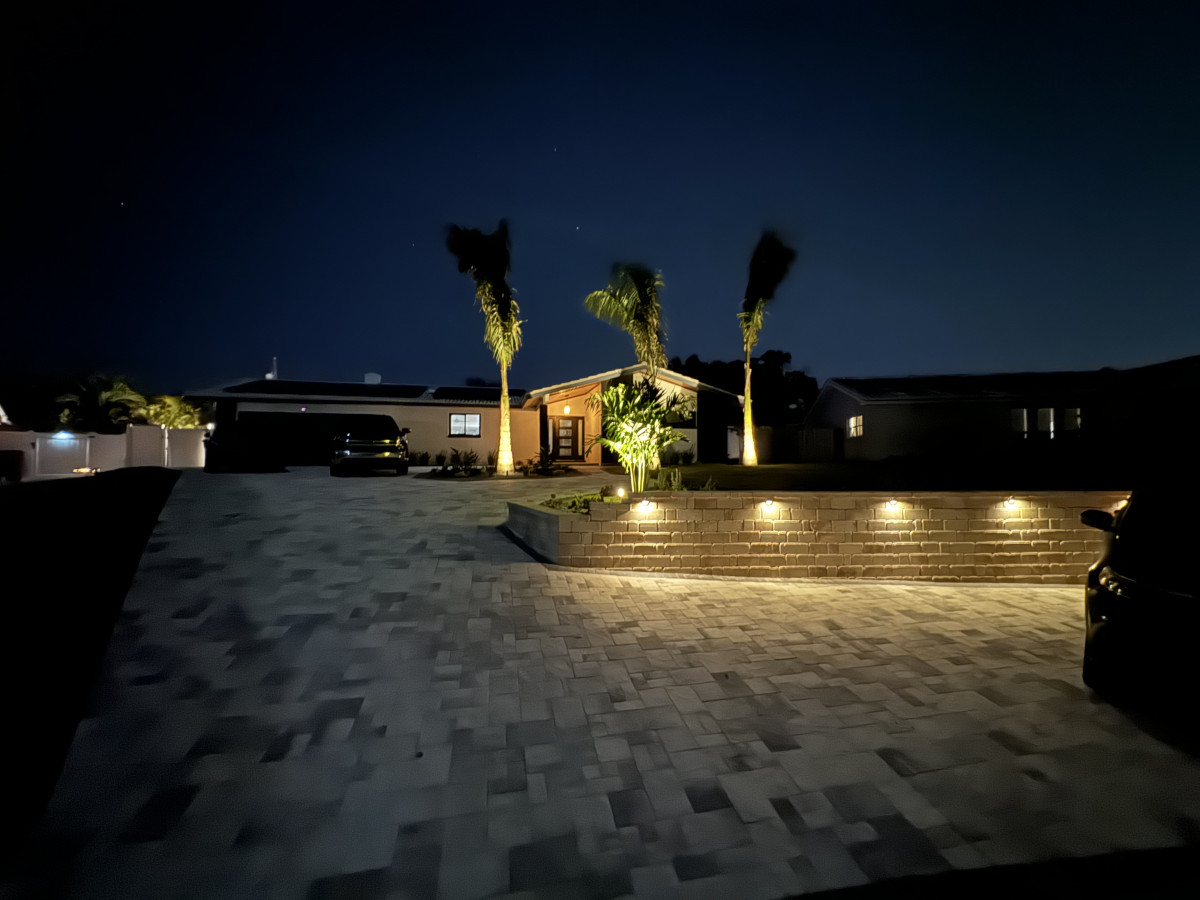When clocks fall back in early November, Tampa Bay homeowners notice an immediate change. Suddenly, it's dark when they arrive home from work. Properties that seemed perfectly fine during summer now feel unsafe and unwelcoming after 6 p.m.
This seasonal shift affects more than just mood. Darker evenings create real safety concerns for families and their guests. Industry professionals throughout the region report increased questions about outdoor lighting as homeowners realize their properties lack adequate illumination. Understanding fall outdoor improvements helps homeowners address these seasonal challenges effectively.
Why Dark Yards Become a Problem in Fall
Walking to your front door shouldn't feel risky, but many homeowners face exactly that situation once November arrives. Steps become invisible. Walkway edges disappear. Uneven pavement hides in shadows. These conditions lead to trips, stumbles, and falls.
National safety statistics show that falls cause thousands of home injuries every year. Poor outdoor lighting makes these accidents far more likely. The problem gets worse during fall and winter when darkness arrives during the hours families use outdoor spaces most.
Security concerns also increase with earlier darkness. Dark areas around homes provide hiding spots that worried homeowners want to eliminate. Simply adding light makes properties feel safer and more secure. When you can see your surroundings clearly, you feel more comfortable coming and going after dark.
The holiday season makes lighting even more important. November and December bring family gatherings and visitors. Guests who don't know your property layout face real danger navigating dark walkways and steps. Nobody wants their holiday party remembered for a guest's fall down darkened stairs.
Many homes rely on a single porch light or harsh motion-sensor floodlights. These basic solutions leave large dark areas and create heavy shadows. They provide some light but miss critical spots where people actually walk and where accidents happen.
What Makes Good Outdoor Lighting Work
Good outdoor lighting serves multiple purposes at once. It keeps people safe, makes homes look welcoming, and lets families use outdoor spaces after sunset. The best systems combine different types of lights working together.
Path lights sit low to the ground along walkways and driveways. They show where to walk safely and define edges clearly. Spacing matters because gaps between lights create dark zones where people can still trip. The right height and brightness prevent annoying glare while lighting the ground effectively.
Step lights solve one of the biggest safety problems outdoors. These specialized fixtures mount on or near stairs to show each step clearly. This prevents the dangerous missteps that happen when stairs disappear in darkness.
Entry lights welcome people at doors while providing clear visibility. Fixtures beside or above doorways eliminate shadows around locks and handles. Good placement provides enough light without shining directly in people's eyes.
Accent lights highlight attractive features like trees, plants, or architectural details. Lights aimed upward at tree trunks create beautiful effects while adding general illumination. Fixtures pointing at walls show off textures and colors. These decorative touches add lighting while making properties look better.
Security lights cover darker zones around property edges. Strategic placement eliminates hiding spots and extends visibility into areas that would otherwise stay completely dark. This practical lighting works together with decorative elements for complete coverage.
Choosing Lights That Last in Florida
Outdoor lighting fixtures must survive Florida's tough conditions. High humidity, salt air near the coast, intense sunshine, and occasional storms test equipment constantly. Quality matters because cheap fixtures fail quickly under these conditions.
LED technology changed outdoor lighting completely. Modern LED lights provide excellent brightness while using very little electricity. They consume 75 to 80 percent less energy than old-style bulbs. LED lights also last much longer, typically 50,000 hours or more, which means less maintenance.
Proper electrical planning keeps lights working reliably. Most outdoor systems run on safe 12-volt power. The transformer must handle all current fixtures plus room for future additions. Wire thickness and length affect brightness, so proper sizing prevents dim lights at the end of runs.
Control systems add convenience and save energy. Basic timers turn lights on and off automatically. Light sensors respond to actual darkness, turning systems on at dusk and off at dawn. Smart controllers connect to phones for remote operation and custom scheduling. Zone controls let different areas run on separate schedules.
Professional installation protects your investment. Buried wires need proper depth and protection from lawn equipment. Waterproof connections prevent corrosion and failures. Fixture placement accounts for plant growth and landscape changes over time.
Dealing With Tampa Bay Weather and Environment
Tampa Bay's climate creates specific challenges for outdoor lighting. High humidity causes rust and corrosion on poor-quality fixtures. Salt air near beaches makes this worse. Choosing products designed for coastal conditions prevents premature failure.
Heavy rainstorms test how well fixtures keep water out. Connections, transformers, and lights must shed water while maintaining safe electrical function. Proper installation techniques stop water from getting inside and causing damage.
Florida's fast-growing plants affect lighting quickly. Bushes and trees grow over fixtures or block light paths. Design should anticipate growth and include plans for periodic adjustments. Some plants drop sap or pollen that requires regular cleaning.
Hurricane preparation includes outdoor lighting. Quality systems withstand normal storms, but severe weather may require temporary protection or removal. Accessible wiring and easy-to-remove fixtures simplify storm prep and repairs afterward.
Planning Your Lighting Installation
November's early darkness makes lighting problems obvious. Homeowners can walk their properties during typical evening hours to identify problem areas. This timing also allows completion before holiday gatherings when good outdoor lighting proves especially valuable.
Professional consultations typically include evening visits to see actual nighttime conditions. Designers evaluate safety concerns, architectural features worth highlighting, and traffic patterns. Detailed plans specify fixture types, quantities, locations, and control options.
Phased approaches let homeowners prioritize safety lighting first, then add decorative elements later. This flexibility works with different budgets while addressing immediate needs. Systems designed with expansion capacity make future additions easy.
Landscape lighting services handle permits, ensure code compliance, and coordinate with existing landscape features. Installation typically requires one to three days for most homes, depending on system size.
For Seminole area homeowners concerned about outdoor visibility and safety during fall's shorter days, From The Ground Up Landscape Design provides lighting consultations. Contact them at 727-607-0087 to discuss how outdoor lighting addresses specific property needs and safety concerns.




